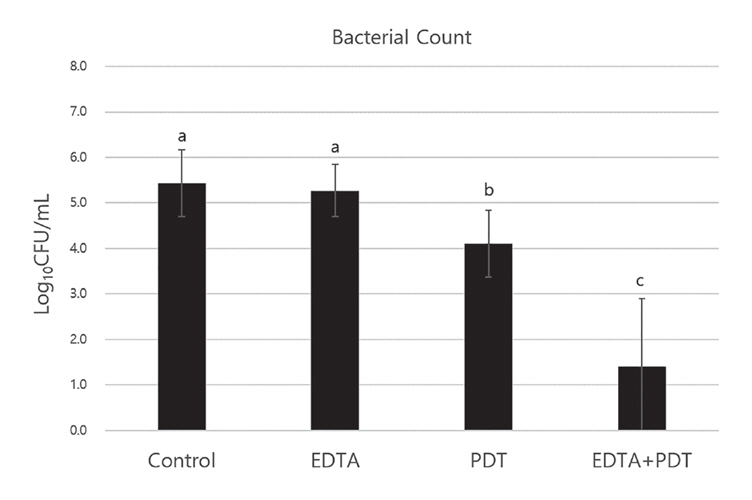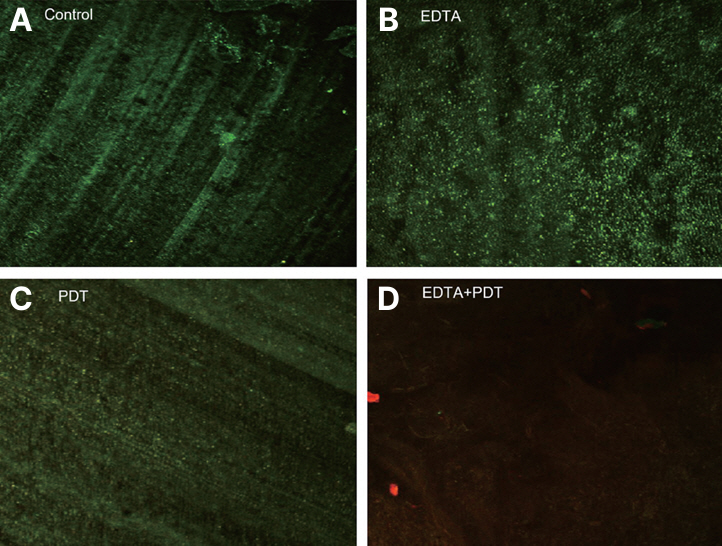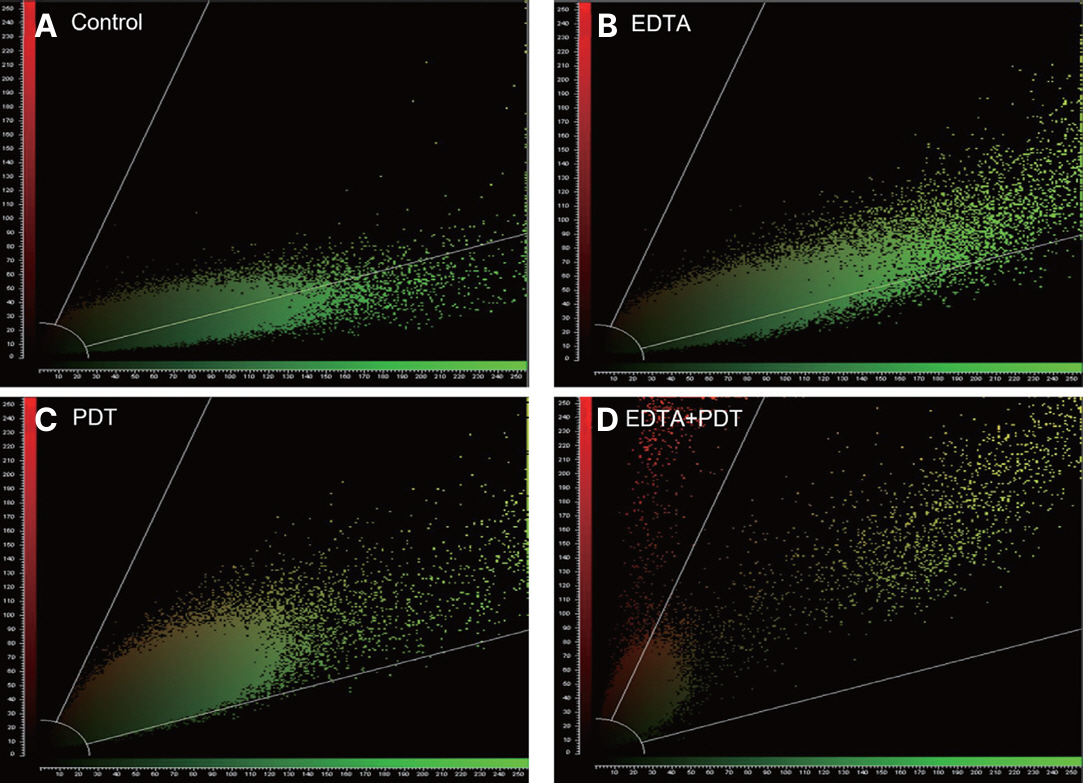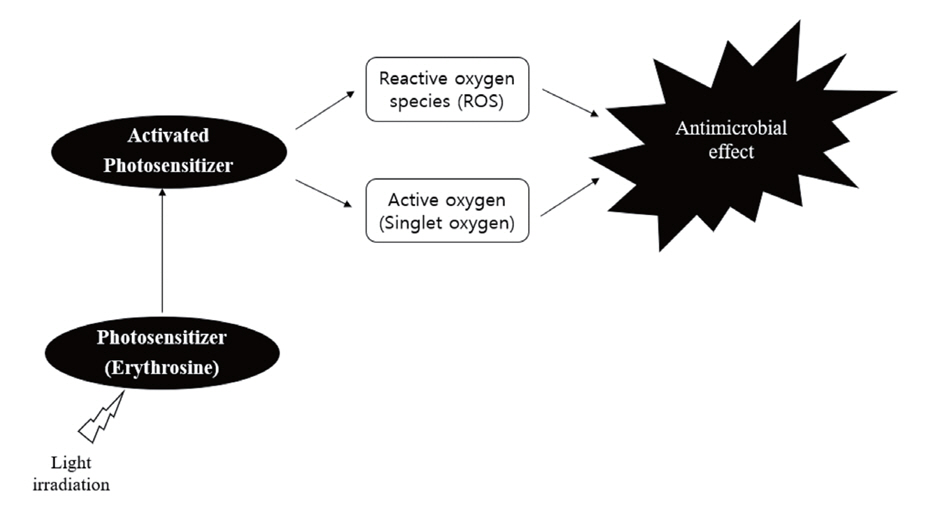1. Selwitz RH, Ismail AI, Pitts NB : Dental caries.
Lancet, 369:51-59, 2007.


3. Islam B, Kahn SN, Kahn AU : Dental caries: from in-fection to prevention. Med Sci Monit. 13:RA196-203, 2007.

4. Konopka K, Goslinski T : Photodynamic therapy in dentistry.
J Dent Res, 86:694-707, 2007.



5. Kim M, Jung HY, Park HJ : Topical PDT in the treatment of benign skin disease: Principles and new applications.
Int J Mol Sci, 16:23259-23278, 2015.


6. da Mota ACC, Leal CRL, Olivan S, Gonçalves MLL, de Oliveira VA, Pinto MM, Bussadori SK : Case report of photodynamic therapy in the treatment of dental caries on primary teeth.
J Lasers Med Sci, 7:131-133, 2016.



7. Park D, Choi EJ, Weon KY, Lee W, Lee SH, Choi JS, Park GH, Lee B, Byun MR, Baek K, Choi JW : Non-invasive photodynamic therapy against - periodontitis-causing bacteria.
Sci Rep, 9:8248, 2019.




8. Saini R, Lee NV, Liu KYP, Poh CF : Prospects in the application of photodynamic therapy in oral cancer and premalignant lesions.
Cancers (Basel), 8:83, 2016.



9. Nagata JY, Hioka N, Kimura E, Batistela VR, Terada RSS, Graciano AX, Baesso ML, Hayacibara MF : Antibacterial photodynamic therapy for dental caries: Evaluation of the photosensitizers used and light source properties. Photodiagnosis Photodyn Ther. 9:122-131, 2012.


10. Costa ACBP, Rasteiro VMC, Pereira CA, Rossoni RD, Junqueira JC, Jorge AOC : The effects of rose bengaland erythrosine-mediated photodynamic therapy on Candida albicans.
Mycoses, 55:56-63, 2012.


11. Wood S, Metcalf D, Devine D, Robinson C : Erythrosine is a potential photosensitizer for the photodynamic therapy of oral plaque biofilms.
J Antimicrob Chemother, 57:680-684, 2006.


12. Mohammadi Z, Shalavi S, Jafarzadeh H : Ethylenediaminetetraacetic acid in endodontics.
Eur J Dent, 7(Suppl 1):S135-S142, 2013.



13. von der Fehr FR, Nygaard-Ostby B : Effect of EDTAC and sulfuric acid on root canal dentine.
Oral Surg Oral Med Oral Pathol, 16:199-205, 1963.

14. Leive L : Release of lipopolysaccharide by EDTA treatment of E. coli.
Biochem Biophys Res Commun, 21:290-296, 1965.


15. Lee YH, Park HW, Lee JH, Seo HW, Lee SY : The photodynamic therapy on
Streptococcus mutans biofilms using erythrosine and dental halogen curing unit.
Int J Oral Sci, 4:196-201, 2012.




16. Jung JS, Park HW, Lee JH, Seo HW, Lee SY : The effect of photodynamic therapy on the viability of
Streptococcus mutans isolated from oral cavity.
J Korean Acad Pediatr Dent, 39:233-241, 2012.

17. Kim JY, Park HW, Lee JH, Seo HW, Lee SY : Antimicrobial effect on Streptococcus mutans in photodynamic therapy using different light source. J Korean Acad Pediatr Dent, 45:82-89, 2018.
18. Fernandes FGL, de Moraes FB, de Cezare JA, Degasperi GR, Fontana CE, Grandizoli DRP, Pinheiro SL : In vitro evaluation of EDTA combined with photodynamic therapy to reduce
Streptococcus mutans in carious dentin. Photodiagnosis Photodyn Ther. 37:102718, 2022.


19. Ho T, Guidolin K, Makky A, Valic M, Ding L, Bu J, Zheng M, Cheng MHY, Yau J, Chen J, Zheng G : Novel strategy to drive the intracellular uptake of lipid nanoparticles for photodynamic therapy. Angew Chem Int Ed Engl. 62:E202218218. 2023.



20. Serper A, Calt S : The demineralizing effects of EDTA at different concentrations and pH.
J Endod, 28:501-502, 2002.


21. Calt S, Serper A : Time-dependent effects of EDTA on dentin structure.
J Endod, 28:17-19, 2002.

22. Lee JK, Park SH, Choi GW : Time-dependent effects of EDTA application on removal of smear layer in the root canal system. J Korean Acad Conserv Dent. 31:169-178, 2006.

23. Ganesan L, Margolles-Clark E, Song Y, Buchwald P : The food colorant erythrosine is a promiscuous protein-protein interaction inhibitor.
Biochem Pharmacol, 81:810-818, 2011.


24. Choi SJ, Park HW, Lee JH, Seo HW, Lee SY : Optimum treatment parameters for photodynamic antimicrobial chemotherapy on streptococcus mutans biofilms. J Korean Acad Pediatr Dent, 42:151-157, 2015.
25. Chequer FMD, de Paula Venâncio V, Bianchi ML, Antunes LMG : Genotoxic and mutagenic effects of erythrosine B, a xanthene food dye, on HepG2 cells.
Food Chem Toxicol, 50:3447-3451, 2012.


26. Nima G, Soto-Montero J, Alves LA, Mattos-Graner RO, Giannini M : Photodynamic inactivation of
Streptococcus mutans by curcumin in combination with EDTA. Dent Mater, 37:E1-E14, 2021. Dent Mater. 37:E1-E14, 2021.

27. Saitawee D, Teerakapong A, Morales NP, Jitprasertwong P, Hormdee D : Photodynamic therapy of curcuma longa extract stimulated with blue light against Aggregatibacter actinomycetemcomitans.
Photodiagnosis Photodyn Ther, 22:101-105, 2018.


28. Lee JK, Park SH, Lee SY, Chang BS, Um HS : The effect of erythrosine-mediated photodynamic therapy on intraorally formed biofilm on titanium surface. Int J Oral Biol, 37:103-108, 2012.
29. Umerska A, Strandh M, Cassisa V, Matougui N, Eveillard M, Saulnier P : Synergistic effect of combinations containing EDTA and the antimicrobial peptide AA230, an arenicin-3 derivative, on gram-negative bacteria.
Biomolecules, 8:122, 2018.



30. Patterson SS : In vivo and in vitro studies of the effect of the disodium salt of ethylenediamine tetra-acetate on human dentine and its endodontic implications.
Oral Surg Oral Med Oral Pathol, 16:83-103, 1963.


31. Heling I, Chandler NP : Antimicrobial effect of irrigant combinations within dentinal tubules.
Int Endod J, 31:8-14, 1998.


32. Park C, Park HW, Lee JH, Seo HW, Lee SY : Application of teeth whitening LED for prevention of dental caries : Antimicrobial photodynamic therapy approach.
J Korean Acad Pediatr Dent, 47:70-77, 2020.

33. Gong JE, Seo HW, Lee SY, Park HW, Lee JH : Susceptibility of mutans streptococci in the planktonic and biofilm state to erythrosine. J Korean Acad Pediatr Dent, 46:135-138, 2019.
34. Garcez AS, Núñez SC, Azambuja N Jr, Fregnani ER, Rodriguez HMH, Hamblin MR, Suzuki H, Ribeiro MS : Effects of photodynamic therapy on gram-positive and gram-negative bacterial biofilms by bioluminescence imaging and scanning electron microscopic analysis.
Photomed Laser Surg, 31:519-525, 2013.



35. Taweewattanapaisan P, Jantarat J, Ounjai P, Janebodin K : The effects of EDTA on blood clot in regenerative endodontic procedures.
J Endod, 45:281-286, 2019.


36. Mendez DAC, Rizzato VL, Lamarque GCC, Dionisio EJ, Buzalaf MAR, Rios D, Machado MAAM, Cruvinel T : Could a chelant improve the effect of curcumin-mediated photodynamic antimicrobial chemotherapy against dental intact biofilms?
Laser Med Sci, 34:1185-1192, 2019.
















 PDF Links
PDF Links PubReader
PubReader ePub Link
ePub Link Full text via DOI
Full text via DOI Download Citation
Download Citation Print
Print



